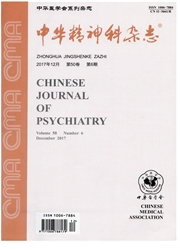

 中文摘要:
中文摘要:
目的运用核磁共振(MRI)技术探讨轻度认知障碍(MCI)老人与健康老人脑结构和功能的异同。方法对14例MCI老人(MCI组)和15名健康老人(正常对照组)进行神经心理学检查,并应用基于体素的形态测量方法,测定两组的灰质体积,并用事件相关功能MRI技术,测定两组在执行情节记忆提取任务时相关脑区的功能变化。结果(1)神经心理学:MCI组听觉词语记忆测试[(2.1±1.7)分]和画钟试验[(7.8±1.2)分]成绩差于正常对照组[分别为(9.2±1.3)分和(9.2±0.8)分;P〈0.05]。(2)结构影像:MCI组的灰质体积小于正常对照组,主要位于情节记忆相关脑区(P〈0.001)。(3)功能影像:MCI组与正常对照组任务正确率和反应时间的差别无统计学意义;MCI组激活降低的脑区主要是海马旁回,而增强激活的脑区主要是前额叶前侧、背外侧、右侧颞上回、右侧颞下回、枕叶皮层(P〈0.005)。结论MCI组内侧颞叶记忆系统结构萎缩、功能下降,在任务难度适当的情节记忆提取任务中,MCI组动员额外脑区激活,以代偿颞叶内侧记忆系统的损害。
 英文摘要:
英文摘要:
Objective To investigate differences in structural and functional brain changes between the aged with mild cognitive impairment (MCI) and ones with normal aging. Methods The voxel-based morphometry (VBM) method was applied to evaluate the differences in brain regional gray matter volume between MCI and normal aging groups. Brain responses, during a suitable episodic memory recognition task, were also examined and compared between the two groups. Results Compared to normal aging, the MCI subjects had greater atrophy in memory related brain regions ( P 〈 0.001 ). In addition, the MCI subjects showed significant activation in the ventrolateral and dorsolateral prefrontal cortex, the right superior and inferior temporal cortex and the occipital cortex when undertook the visual episodic memory recognition task (P 〈 0. 005 ). Conclusions The results support that there is gray matter atrophy in memory related brain regions in the elderly with MCI, and in performing the suitable episodic memory recognition task, the additional brain regions may be activated for compensation for memory related brain regions deficits.
 同期刊论文项目
同期刊论文项目
 同项目期刊论文
同项目期刊论文
 Hippocampal neurogenesis and behavioural studies on adult ischemic rat response to chronic mild stre
Hippocampal neurogenesis and behavioural studies on adult ischemic rat response to chronic mild stre 期刊信息
期刊信息
